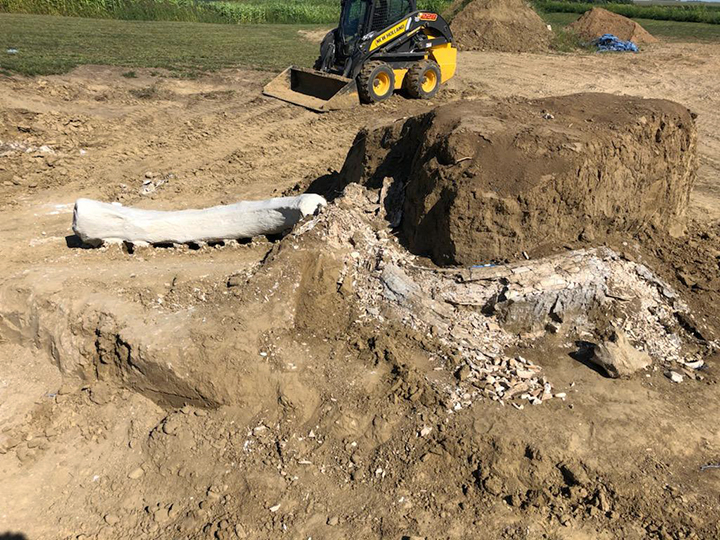 ,
,  ,
,  ,
,  ,
, 
Hills resident Doug Chapman recently opened two sealed boxes containing mammoth teeth, remnants of an archeological dig in his backyard two years ago.
“I think it’s neat we were able to save them,” he said.
Chapman and his wife, Deanna, picked up the teeth last month when they visited the Mammoth Site in Hot Springs, South Dakota.
They met with Jim Mead, the Mammoth Site paleontologist and director of outreach service, who traveled to Hills in August 2019 when a mammoth skull complete with tusks was found. They also found bison bones.
Doug Chapman unearthed the bones while leveling a portion of his backyard.
No other bone remnants of the mammoth were found during the 2019 paleontology dig. However, what was found was worth preserving.
“The mammoth skull — although damaged at the top and back of the head — had beautiful teeth, which we preserved,” Mead said.
The skull, he surmised, was damaged after the mammoth died and became buried during the Ice Age, an estimated 10,000 to 18,000 years ago.
Mead is unsure of the actual burial location of the mammoth (whose body is estimated as tall as 13 feet in height and as much as 10 tons in weight). Glaciers changed the area’s geology and pushed the mammoth skull and tusks to what would later become the Chapmans’ backyard.
Years of sediment deposits by the wind covered the mammoth bones, and a meadow developed on top of the remains. Bison grazed the area, and a young bull later joined the burial location of the mammoth skull.
“During the historical times the area was carved up and trees planted on top of the bones,” Mead said. “Doug Chapman then finds the fossils and here we are today.”
The teeth were taken to the Mammoth Site in Hot Springs for preservation and examined to determine age and type of species.
‘The individual was probably an older male Columbian mammoth,” Mead said. “The tooth eruption implies that the individual was likely about 50 years old.”
The Columbian mammoth was one of the largest species of mammoth and had long, curved tusks and four molars. Remains of Columbian mammoths have been found throughout the U.S.
The teeth are like a human’s wisdom teeth. The molars were fully erupted from the jaw and showed wear from chewing.
One molar weighs about 25 pounds and the other, which still has a portion of the mammoth’s palate and jaw attached, weighs about 45 pounds.
The teeth, skull, tusks and bison bones were uncovered over a two-month period in 2019 by Mead, Chapman and Chapman’s grandchildren.
Unfortunately, the mammoth skull and tusks disintegrated into small pieces as they were uncovered in the dig. The pieces will be used in a radiocarbon dating process to determine their exact age.
A portion of the tusks was preserved.
With Mead’s help, Chapman used metal piping from his former refrigeration business to stabilize a 5-foot casting of one tusk made of plaster of Paris. The upper 5-foot section of the tusk, which contains the tip showing a wear pattern, is at the Mammoth Site for further preservation.
“It’s estimated that these (tusks) weighed 350 pounds apiece,” Chapman said.
With his section of tusk, Chapman is slowly peeling off the top portion of the plaster cast. Underneath he is slowly removing the dirt still around the tusk pieces with rubbing alcohol and a paint brush so as not to damage what’s left of the tusk.
Chapman offered to tell his story and show the molars to local middle school students. The local accounting of mammoths roaming the Midwest will likely take place this spring.


